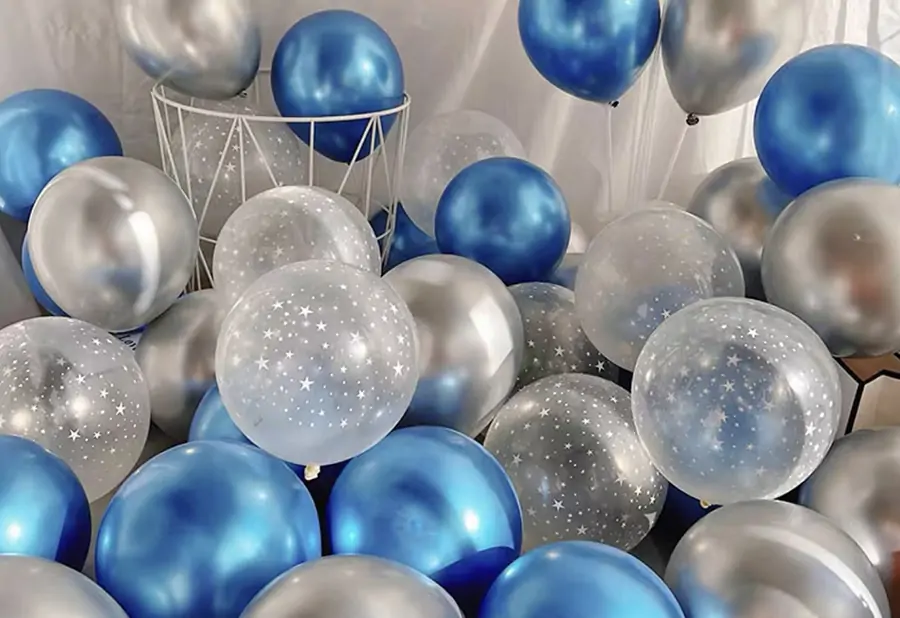Introduction
Helium balloons are a popular choice for parties, celebrations, and special events due to their ability to float and add a festive atmosphere. However, many people wonder how long these balloons will stay afloat. The duration a helium balloon remains buoyant depends on several factors, including the type of balloon, environmental conditions, and any treatments applied. This article explores these aspects to provide a comprehensive understanding.
Understanding Balloon Types
Latex Balloons

Latex balloons are made from natural rubber and are known for their elasticity and biodegradability. They are commonly used for various occasions due to their vibrant colors and shapes.
Foil Mylar Balloons
Foil balloons, often referred to as Mylar balloons, are made from a thin layer of metallic plastic. They are less porous than latex balloons, which allows them to retain helium for a longer period.
Factors Affecting Float Time
Balloon Size
The size of the balloon plays a significant role in its float time. Larger balloons have a greater volume and can hold more helium, which generally allows them to float longer than smaller ones.
Environmental Conditions
Temperature and humidity can greatly affect the longevity of helium balloons. High temperatures cause helium to expand and escape more quickly from the balloon, leading to a shorter float time. Conversely, cold temperatures can cause the balloon to shrink and reduce its buoyancy.
Helium Quality
The purity of the helium used to fill the balloons is another crucial factor. High-purity helium ensures that balloons stay inflated for a longer period. Sometimes, a helium-air mixture is used, which can reduce the float time of the balloons.
Balloon Treatment
Applying a product like Hi-Float to latex balloons can significantly extend their float time. Hi-Float is a liquid solution that creates a coating inside the balloon, helping to seal the helium in and prevent it from escaping quickly.
Average Float Times
Latex Balloons
- Standard Size (9-12 inches): Typically float for 8 to 12 hours.
- Large Size (24 inches): Can float for 24 to 48 hours.
- With Hi-Float Treatment: Float time can be extended up to 2 to 4 times longer.
Foil Balloons

- Standard Size (18 inches): Generally float for 3 to 5 days.
- Larger Sizes: Can stay inflated for up to a few weeks under optimal conditions.
Tips to Extend Float Time
- Use Hi-Float Treatment: Applying Hi-Float to latex balloons can significantly extend their float time.
- Choose Larger Balloons: Larger balloons can hold more helium and generally float longer.
- Keep Balloons Indoors: Environmental conditions like temperature and humidity can affect float time. Keeping balloons indoors can help maintain their buoyancy.
- Avoid Overfilling: Overfilling balloons can cause them to burst or leak helium more quickly.
- Store Balloons Properly: If you need to prepare balloons in advance, store them in a cool, dry place away from sharp objects and direct sunlight.
Table of Contents
- Introduction
- Understanding Balloon Types
- 2.1 Latex Balloons
- 2.2 Foil (Mylar) Balloons
- Factors Affecting Float Time
- 3.1 Balloon Size
- 3.2 Environmental Conditions
- 3.3 Helium Quality
- 3.4 Balloon Treatment
- Average Float Times
- 4.1 Latex Balloons
- 4.2 Foil Balloons
- Tips to Extend Float Time
- Conclusion
Conclusion
The duration a helium balloon stays afloat depends on various factors, including the type of balloon, size, environmental conditions, helium quality, and any treatments applied. By understanding these factors and taking appropriate measures, you can ensure that your helium balloons remain buoyant for the desired period, enhancing the festive atmosphere of your event.
